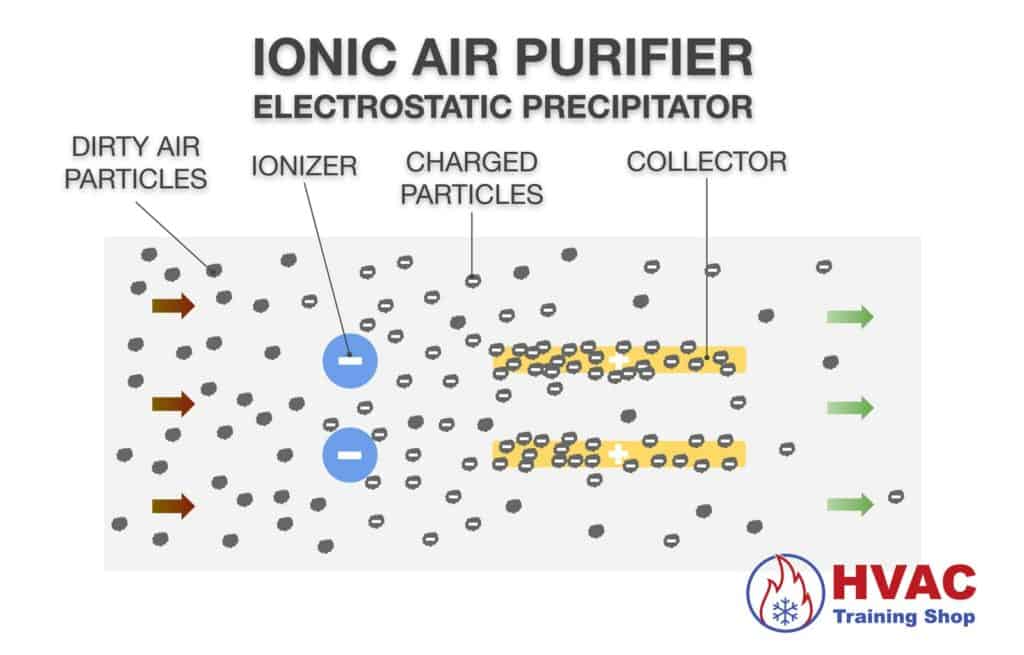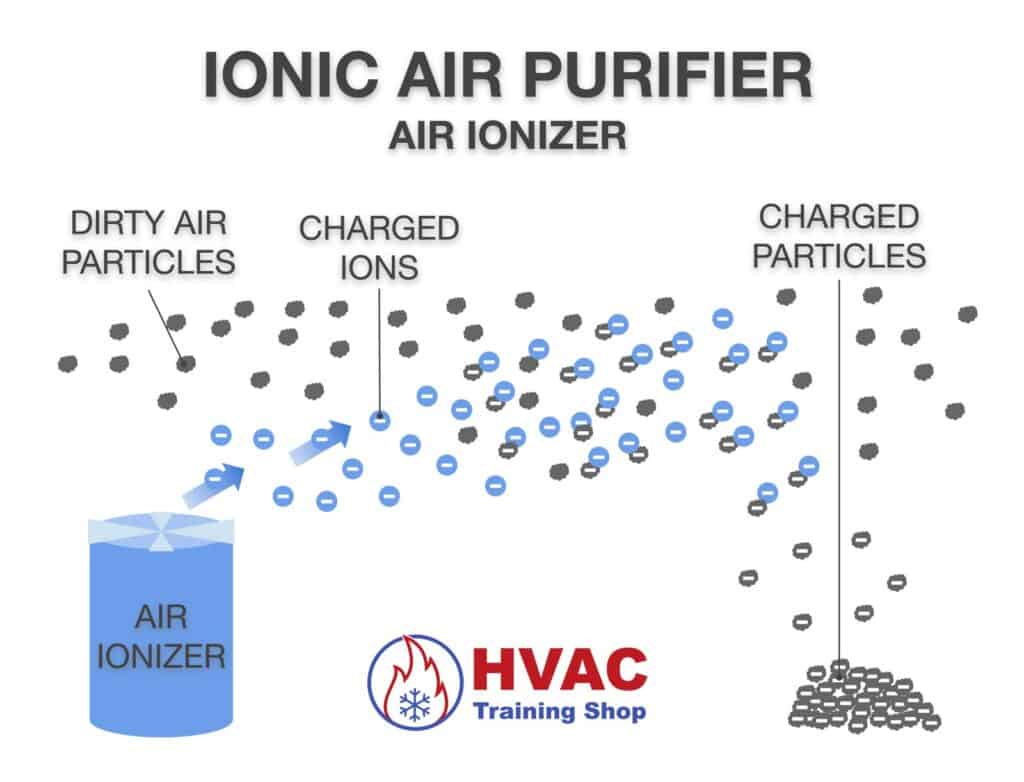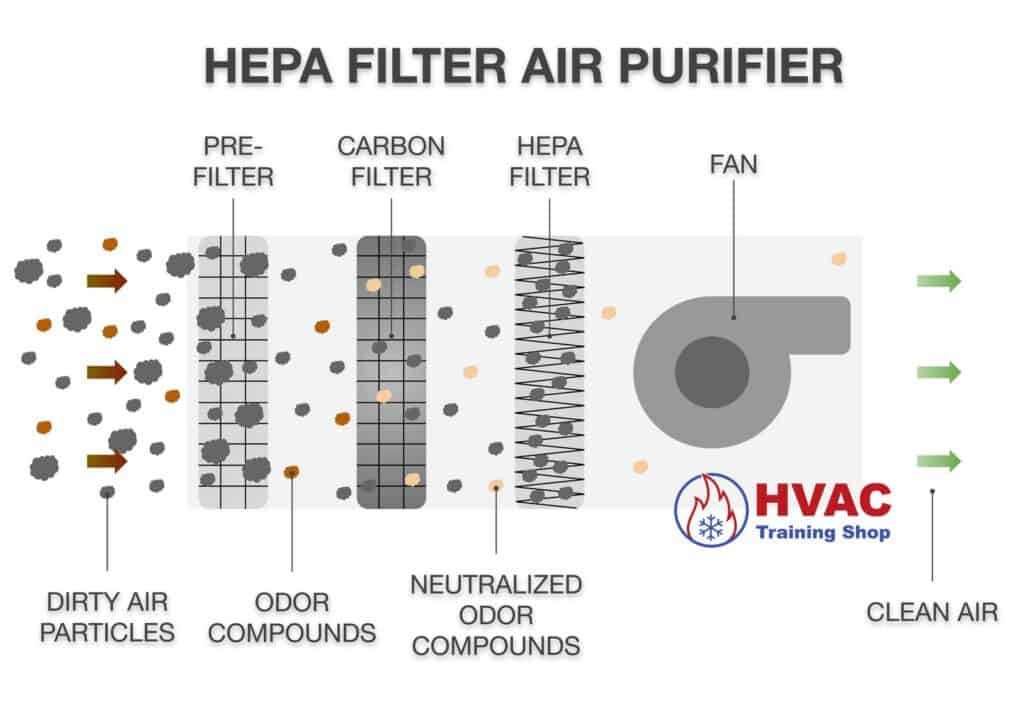If you’re looking for an air purifier for your home, you might be confused by the different types – ionic and HEPA air purifiers are the most common. While they both provide cleaner air, the way they work is completely different.
In this article, we’ll take a look at how ionic and HEPA air purifiers work to understand their differences. I’ll also go over the pros and cons of each type of air purifier. Finally, I’ll discuss what type of air purifier you should use in your home.
The difference between ionic and HEPA air purifiers
The main difference between ionic and HEPA air purifiers is that ionic purifiers use electricity to capture particles, while HEPA purifiers use air filters to capture particles.
Below I’ll go into more detail about how each of these air purifiers work.
Ionic vs HEPA air purifier pros & cons
Ionic Air Purifiers | HEPA Air Purifiers |
Pros
| Pros
|
Cons
| Cons
|
Should you use an ionic or HEPA air purifier?
Here’s the bottom line: You should almost always use a HEPA air purifier instead of an ionic air purifier. While ionic air purifiers cost less to run in the long term, their performance is dismal compared to a HEPA air purifier.
Ionic air purifiers don’t do a very good job at removing all particulates from the air. In fact, most particulates end up on the floor of your home or stuck to the walls.
Ionic air purifiers with collection plates remove some particles from the air, but they also allow others to pass right through. Worse yet, the air purifier’s efficiency degrades as the collection plates get dirty.
It is true that ionic air purifiers are able to reduce concentrations of small particulates in the air. However, their benefit is offset by negative ion and ozone generation that adversely affects health.
HEPA air purifiers don’t have a problem with ozone generation. And they don’t let particles pass right through them either – HEPA filters are able to capture 99.97% of particles that are 0.3 microns in diameter. And for particles that are larger than 0.3 microns, HEPA filters can capture more than 99.97%.
If you’re wondering if HEPA filters will let more particles through as they get dirtier, don’t worry. As HEPA filters get dirty, they get even more efficient (but you should still change your HEPA filter regularly so you don’t lose too much airflow).
There is maybe one situation where using an ionic purifier would be okay. That’s if you need to purify a very large space. HEPA air purifiers are limited in their coverage area – most aren’t able to cover an area of more than 2000 sq. ft.
However, using an ionic air purifier won’t sufficiently purify the air like a HEPA purifier will. So only use an ionic air purifier if you just need subtle purification. And vacuum your home regularly since the ionic air purifier will cause lots of dust to stick to your floors and walls.
How ionic air purifiers work
Ionic air purifiers work by using electrical charges to attract particles in the air. There are two different types of ionic air purifiers: electrostatic precipitators and air ionizers
Electrostatic precipitators
Electrostatic precipitators work by attracting particles to an electrically charged plate. The particles accumulate on the charged plate, so you must clean the plate every so often.
Here’s a step-by-step explanation of how electrostatic precipitators work:
- A fan circulates air through the air purifier.
- As air flows through the purifier, the air’s particles pass over an ionizer.
- The ionizer has a negative charge, so the particles gain a negative charge.
- Next, the negatively charged particles pass over the collector plate.
- The collector is positively charged, so the negatively charged particles stick to the collector.
- Cleaner air exits the purifier, leaving behind particles stuck to the collector plate.

Electrostatic precipitators work well in theory. Their primary shortcoming is that they don’t trap very many particles. They will often let many particles flow right through them. Even large particles that would normally be trapped by a standard pleated filter can pass right through an electrostatic precipitator.
Another downside of using an electrostatic precipitator is that they get less efficient when dirty. So you need to remember to clean the collector plate very often. If the collector plate gets dirty, then the electrostatic precipitator is useless.
Air ionizers
Air ionizers are another type of ionic air purifier. Air ionizers work by emitting negative ion charges into the air. Unlike electrostatic precipitators, air ionizers don’t need a fan to function. The charges simply radiate outward into the room’s air.
Here’s a step-by-step explanation of how air ionizers work:
- The air ionizer generates negatively charged ions.
- The ion charges radiate outward and move around your room’s air.
- As the ion charges float around in the air, they bind to airborne particles.
- Once the air particles are bound with a charge, they eventually stick to a surface in your home.

The main drawback of air ionizers is that the charged particles will show no discretion in what they stick to. So it’s more than likely that the particles will end up stuck to your carpet, walls, or curtains.
In the end, yes the air will be cleaner – but at the expense of the surfaces in your home. If you use an air ionizer, be sure to vacuum regularly to clean up the dust that binds to the surfaces in your home.
Ionic air purifiers’ dirty secret
One of the main side-effects of using an ionic air purifier is the production of ozone. Ozone is created as a byproduct of the ionizer. For the most part, ozone is unwanted since it is considered air pollution.
Ozone can cause health problems – breathing issues in particular. Ozone can cause wheezing, shortness of breath, and increase the occurrence of asthma attacks.
The one area where ozone is beneficial is in the removal of cigarette smoke. Ozone is believed to react with acrolein, one of the odor-causing chemicals in cigarette smoke.
How HEPA filter air purifiers work
HEPA filter air purifiers work by passing air through a thick pleated filter. As dirty air passes through the filter, particles become trapped in the filter. Clean air then exits the other side of the filter.
HEPA stands for high-efficiency particulate air. Any filter that seeks to meet the HEPA standard must remove at least 99.97% of particles with a diameter of 0.3 micrometers.
Here’s a step-by-step explanation of how HEPA filter air purifiers work:
- The fan sucks air from your home into the air purifier.
- As air goes into the purifier, it first goes through a pre-filter, which catches large particles.
- Next, the air passes through a carbon filter, which neutralizes odor compounds so they don’t smell up your home.
- Finally, the air passes through the HEPA filter, which filters out small microscopic particles before the air goes back into your home.

For air cleaning efficiency, it doesn’t get much better than HEPA filters. HEPA filters remove most particles from the air – even more so than ionic air purifiers.
One of the benefits of using a HEPA air purifier is that HEPA filters get more efficient as they get dirty. This means that a dirty HEPA filter is able to remove more particles than a clean one.
Even though a dirty HEPA filter is more efficient than a clean one, you should still change your HEPA filter. I recommend changing your HEPA filter at least every 6 months. Otherwise, you will have airflow issues through your air purifier.
Low airflow through a HEPA air purifier will lower its air cleaning performance. If the HEPA filter is clogged, your air purifier’s fan won’t be able to move air around your room to clean it.


